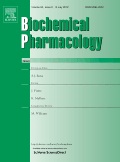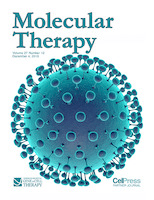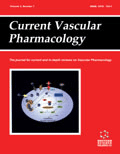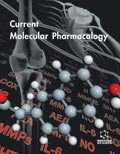
MOLECULAR PHARMACOLOGY
Scope & Guideline
Transforming Pharmacology through Rigorous Research
Introduction
Aims and Scopes
- Pharmacological Mechanisms:
Research exploring the molecular mechanisms of drug action, including receptor interactions, signaling pathways, and pharmacodynamics, is central to the journal's scope. - Disease Mechanisms:
Papers that investigate the molecular basis of diseases, particularly cancer, cardiovascular disorders, and neurodegenerative diseases, contribute to understanding how pharmacological interventions can be optimized. - Therapeutic Innovations:
The journal emphasizes innovative therapeutic strategies and drug development, including the use of natural products, nanomedicine, and novel pharmacological agents. - Translational Research:
A significant focus on translational research that bridges laboratory findings with clinical applications, aiming to enhance therapeutic outcomes in various diseases. - Interdisciplinary Approaches:
Encouragement of interdisciplinary research that integrates molecular biology, pharmacology, and clinical medicine to tackle complex health issues.
Trending and Emerging
- Cancer Pharmacology:
An increased focus on cancer pharmacology, particularly studies involving targeted therapies, immunotherapies, and the molecular mechanisms underlying tumor progression and resistance. - Neuropharmacology:
Growing interest in neuropharmacology, with research exploring the molecular underpinnings of neurodegenerative diseases and the potential of novel neuroprotective agents. - Natural Products and Herbal Medicine:
A resurgence in the exploration of natural products as therapeutic agents, emphasizing their molecular mechanisms and potential in modern pharmacotherapy. - Nanomedicine:
Emerging studies focusing on nanocarriers and nanotechnology applications in drug delivery systems, highlighting their role in enhancing drug efficacy and targeting. - MicroRNA and Epigenetics:
A trend towards understanding the roles of microRNAs and epigenetic modifications in disease processes and their potential as therapeutic targets.
Declining or Waning
- Traditional Pharmacology:
There appears to be a waning emphasis on traditional pharmacological studies, particularly those focusing solely on classical drug action mechanisms without integrating modern molecular insights. - Single-agent Studies:
Research centered around single-agent therapies is declining, as there is a growing trend towards combination therapies and polypharmacology. - Animal Models:
Papers relying heavily on animal models without translational relevance are becoming less common, reflecting a shift towards more human-relevant research methodologies. - Basic Biochemical Studies:
While foundational studies remain important, there is a noticeable decrease in purely biochemical investigations that do not connect to broader physiological or clinical implications. - Focus on Non-Cancer Diseases:
Areas related to non-cancer diseases, although still relevant, have seen less representation compared to the overwhelming focus on oncology-related pharmacology.
Similar Journals

Biomolecules & Therapeutics
Transforming Discoveries into Therapeutic SolutionsBiomolecules & Therapeutics is a prominent journal published by the Korean Society of Applied Pharmacology, dedicated to advancing knowledge in the fields of Biochemistry, Drug Discovery, Molecular Medicine, and Pharmacology. With an ISSN of 1976-9148 and an E-ISSN of 2005-4483, this journal serves as a vital platform for researchers and professionals to disseminate their findings from 2008 through 2024. Ranking in the Q2 category across multiple relevant fields, including Pharmacology and Drug Discovery, and consistently placing in the 60th to 70th percentiles in Scopus rankings, Biomolecules & Therapeutics exemplifies a commitment to high-quality research and scientific integrity. Although it operates on a traditional access model, readers can be assured of the journal's rigorous peer-review process, ensuring that published articles contribute meaningfully to ongoing discourse in pharmacological and biochemical research. Located in Seoul, South Korea, the journal stands at the forefront of innovation in healthcare, making it an essential resource for academics, students, and industry professionals alike.

BIOCHEMICAL PHARMACOLOGY
Innovative research bridging biochemistry and pharmacology.BIOCHEMICAL PHARMACOLOGY, published by PERGAMON-ELSEVIER SCIENCE LTD, stands as a leading international journal devoted to the advancing field of biochemical pharmacology. Since its inception in 1958, the journal has continuously offered a platform for innovative research, delivering critical insights into the interaction between biochemical processes and pharmaceutical applications, and now converges towards its 2024 edition. With an impressive Q1 ranking in both Biochemistry and Pharmacology categories, it ranks 32nd out of 313 in Pharmacology and Toxicology, and 58th out of 438 in Biochemistry according to Scopus, showcasing its significant impact within the scientific community. Researchers and professionals rely on this journal to keep abreast of essential developments, given its robust peer-review process and a comprehensive selection of articles that span experimental studies, clinical trials, and theoretical analyses. Although not an Open Access journal, it remains pivotal for those seeking to advance their knowledge in the dynamic fields of biochemistry and pharmacology. With its high impact factor and emphasis on quality research, BIOCHEMICAL PHARMACOLOGY continues to be an invaluable resource for students, researchers, and industry professionals striving to make breakthroughs in drug development and therapeutic strategies.

ACS Pharmacology & Translational Science
Bridging discoveries and clinical applications.ACS Pharmacology & Translational Science is a premier journal published by the American Chemical Society, dedicated to advancing knowledge in the fields of pharmacology and translational science. Operating since 2018, the journal has quickly established itself as a leader in its domain, holding a prestigious Q1 ranking in both Pharmacology and Medical Pharmacology for 2023. With a robust Scopus ranking, it currently occupies the 21st position out of 272 in Medical Pharmacology, reflecting its significant impact within the scientific community at the 92nd percentile. The journal provides an open-access platform for researchers to disseminate innovative findings and viewpoints that bridge the gap between drug discovery and clinical application. In an era where translational research is critical for the success of pharmacological advances, ACS Pharmacology & Translational Science serves as an essential resource for scientists, professionals, and students eager to explore cutting-edge developments in drug development and therapeutic strategies. The journal is based in the United States, with a commitment to fostering collaboration and knowledge sharing across borders.

MOLECULAR THERAPY
Connecting researchers to reshape the future of medicine.MOLECULAR THERAPY, published by CELL PRESS, is a distinguished journal in the field of molecular biology and therapy, renowned for its significant contributions to drug discovery, genetics, and pharmacology since its inception in 2000. This prestigious journal, which holds a commendable position in the Q1 category across multiple disciplines including Drug Discovery, Molecular Medicine, and Molecular Biology, facilitates cutting-edge research and innovative therapies that aim to improve patient outcomes. With an impressive Scopus ranking that places it among the top journals in its field—such as rank #6 in Drug Discovery and #8 in Pharmacology—MOLECULAR THERAPY is crucial for researchers, professionals, and students seeking to advance their understanding and application of molecular techniques. The journal welcomes high-quality submissions that explore the therapeutic potential of molecular mechanisms, fostering a collaborative spirit within the scientific community to push the boundaries of modern medicine.

European Journal of Pharmacology
Shaping the future of pharmacology through impactful scholarship.The European Journal of Pharmacology, a prestigious publication by Elsevier, serves as a vital resource in the field of pharmacology, offering rich insights into drug development and therapeutic applications. Since its inception in 1967, this journal has evolved to encompass groundbreaking research, including pharmacokinetics, toxicology, and innovative pharmacological methodologies, making it an essential platform for researchers and professionals alike. With an impressive impact factor that places it in the Q1 category of pharmacological journals and a Scopus ranking of #49 out of 313, the journal is recognized in the 84th percentile within its category, solidifying its significance in the academic community. Although the journal is not open access, it continues to attract contributions from leading scientists worldwide, ensuring that cutting-edge findings are disseminated effectively. The European Journal of Pharmacology not only highlights advancements in drug discovery and clinical applications but also promotes interdisciplinary collaboration, ultimately contributing to the progress of healthcare globally.

Journal of Pharmacology & Pharmacotherapeutics
Transforming Pharmacotherapy through Rigorous ResearchJournal of Pharmacology & Pharmacotherapeutics is a vital academic resource published by SAGE Publications Inc., focusing on the diverse and evolving fields of pharmacology and pharmacotherapy. With an ISSN of 0976-500X and E-ISSN 0976-5018, this journal serves as a platform for rigorous research and innovative insights from 2010 to 2024, reflecting the latest advancements and challenges within the pharmacological landscape. Despite being placed in the Q4 quartile for both general pharmacology and medical pharmacology in 2023, it continues to be an essential resource for researchers, professionals, and students striving to understand the complexities of drug action, therapy optimization, and pharmaceutical sciences. The journal underscores the importance of disseminating critical findings to stimulate further research and collaborative dialogue. Although currently not open access, it can be accessed through leading academic databases, positioning itself as a significant entity in the medical and pharmacological research community.

Current Vascular Pharmacology
Exploring the Frontiers of Cardiovascular PharmacologyCurrent Vascular Pharmacology is a premier academic journal published by Bentham Science Publications Ltd, focusing on the intersection of pharmacology and cardiovascular medicine. With an impact factor that reflects its significance in the field, this journal ranks in the Q1 category for both Pharmacology and Cardiology, showcasing its dedication to high-quality research. Its Scopus ranks place it in the top percentile of its categories, highlighting its influence among scholars and practitioners alike. Issued since 2003 and continuing through 2024, Current Vascular Pharmacology aims to disseminate cutting-edge findings and foster knowledge exchange among researchers, professionals, and students engaged in cardiovascular pharmacology. Despite being a subscription-based journal, it remains a vital resource for those seeking the latest advancements in drug development and therapeutic interventions for vascular diseases. Located in the United Arab Emirates, the journal serves as an essential platform for global discourse on vascular health.

Anti-Cancer Agents in Medicinal Chemistry
Exploring the intersection of chemistry and cancer research.Anti-Cancer Agents in Medicinal Chemistry is a pivotal journal in the realm of cancer research, published by Bentham Science Publishers in the United Arab Emirates. With an ISSN of 1871-5206 and an E-ISSN of 1875-5992, this esteemed journal has been disseminating high-quality research since its inception in 2006, and is set to continue through 2024. The journal is categorized in the third quartile (Q3) across key areas including Cancer Research, Molecular Medicine, and Pharmacology, highlighting its essential role in providing valuable insights to the scientific community. Despite its open-access status being unspecified, researchers benefit from the rigorous peer-review process ensuring the publication of significant advancements. The journal ranks well within Scopus, particularly in the fields of Pharmacology and Cancer Research, which positions it as a notable resource for professionals, students, and researchers aiming to deepen their knowledge in anti-cancer strategies. Through its comprehensive scope, the journal aims to bridge the gap between medicinal chemistry and clinical applications, making it an indispensable tool for those dedicated to advancing cancer therapeutics.

Current Molecular Pharmacology
Fostering Dialogue in the Evolving World of PharmacologyCurrent Molecular Pharmacology, published by Bentham Science Publishers, is a prominent journal focused on the dynamic fields of pharmacology, drug discovery, and molecular medicine. With an ISSN of 1874-4672 and an E-ISSN of 1874-4702, this journal aims to disseminate cutting-edge research and review articles that showcase innovative methodologies and groundbreaking findings from 2008 through 2024. Holding a respectable Q3 category ranking in Drug Discovery, Molecular Medicine, and Pharmacology for 2023, Current Molecular Pharmacology serves as an essential platform for both established researchers and emerging scholars to share their insights. The journal is indexed in Scopus with its relevant ranks catering to pharmacology and molecular biology, ensuring it reaches a wide array of professionals, researchers, and students in the field. As a contributor to advancing pharmacological sciences, this journal provides invaluable access to the latest advancements and fosters ongoing dialogue in molecular pharmacology, positioning itself as a key resource in the exploration of therapeutic agents and their interactions.

Physiology and Pharmacology
Advancing knowledge in physiology and pharmacology.Physiology and Pharmacology is a distinguished open access journal that has been disseminating high-quality research in the fields of physiology and pharmacology since its inception in 1997. Published by the Iranian Society of Physiology & Pharmacology, this journal offers a platform for scholars and practitioners to share innovative findings and advancements that contribute to the understanding of biological systems and drug action. With its ISSN 2476-5236 and E-ISSN 2476-5244, it ensures global reach and accessibility. The journal is positioned in the third quartile for Linguistics and Language and fourth quartile in both Pharmacology and Physiology categories according to Scopus rankings, reflecting a commitment to expanding knowledge within these interdisciplinary domains. Set within the academic landscape of Iran, the journal aims to bridge regional research with the international community, providing valuable insights into physiological processes and pharmacological developments. In light of its open access model, the Physiology and Pharmacology journal plays a crucial role in enhancing the visibility of research outcomes and fostering collaboration among researchers, professionals, and students on a global scale.